

| Sherwood Forest | ||
| A brief history of invertebrate recording | ||
| ..... | ||
| Sherwood Forest is well known across the world as the traditional home of the legend that is Robin Hood. Many thousands of tourists visit the site throughout the year to see the magnificent Major Oak, but whilst tourism puts money into the local economy, it also assists in creating additional pressures on the forest's already fragile ecology. | ||
| ..... | ||
|
In recent years, Sherwood Forest is
become increasingly well known to naturalists across the
UK, as a site of national importance for invertebrates
and this page looks at the changes that have occurred
within the Forest's invertebrate fauna since the late
1800's/early 1900's, through to the present day. It also
provide a brief history of the area, the invertebrate
recorders, site surveys and current work still ongoing. Sherwood Forest as a National Nature Reserve In 1977, a Nature Conservation review classed the 200 hectare Sherwood Forest Country Park as a Grade 1 area of ancient woodland and heathland. The site was later reclassified as a Site of Special Scientific Interest (SSSI) under the 1981 Wildlife and Countryside Act and then awarded National Nature Reserve (NNR) status in 2002. |
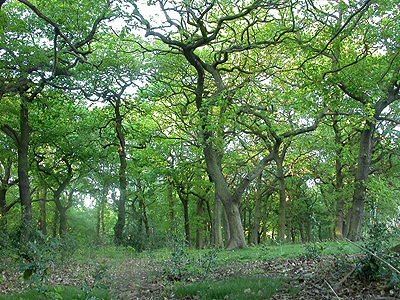 |
|
| ..... | ||
| The Sherwood NNR is encompassed within a larger area, with the main sites being Sherwood Forest Country Park and Budby South Forest. There are several other areas of woodland which are included within both SSSI's and some of these are strictly private. | ||
| ..... | ||
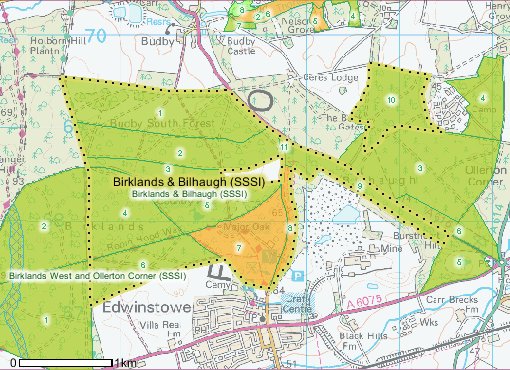 |
Due to a legal loophole, Natural England had to notify the ancient Sherwood Forest area as two separate Sites of Special Scientific Interest (SSSI) which they continue to regard as representing the whole of the Birklands and Bilhaugh (Sherwood Forest) complex. The two SSSI's are known as Birklands and Bilhaugh, and Birklands West and Ollerton Corner. Both SSSI areas of Sherwood Forest are produced on the left. The upper map shows the two areas which make up the Birklands and Bilhaugh SSSI, showed within the confines of the dotted lines. The lower map shows the two seperate areas which make up the Birklands West and Ollerton Corner SSSI. The whole site lies on the dry, nutrient-poor soil of Sherwood Sandstone. Woodland is dominated by mature native trees including Sessile Oak (Quercus petraea) Pedunculate Oak (Quercus robor) and Silver Birch (Betula pendula) with Rowan (Sorbus aucuparia) Holly (Ilex aquifolium) and Hawthorn (Crataegus monogyna) occurring in smaller numbers. Areas of non-native trees such as Beech (Fagus sylvatica) and Sycamore (Acer pseudoplatanus) are gradually being removed from the site as part of current forest restoration policy. The forest holds over 1000 ancient Oaks. |
|
| ..... | ||
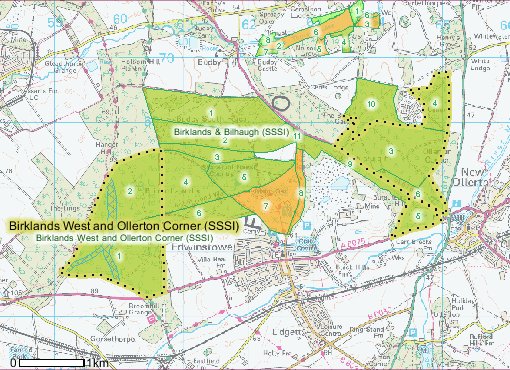 |
Many of these Oaks are
now largely dead or dying and at varying stages of decay.
Industrial pollution probably had a considerable affect
on the forest during the early 1900's and whilst many of
these symbolic remnants still remain in an upright state,
some have fallen and have been left in place. Present
forest management includes the non-removal of fallen
branches or trees, unless there is a potential public
health and safety issue involved. Heathland habitat across the site is limited and fragmented, but outside the reserve, former Forestry Commission Pine plantations are been cleared as part of an ongoing heathland restoration project. Immediately to the north of Sherwood Forest CP is Budby South Forest, which is Nottinghamshire's most expansive area of lowland heath. Ground flora is poor over much of the NNR, with the limited diversity expected from such a heavily wooded site of this age and on this soil-type. Typically, much of the ground flora consists of various grasses and Bracken. |
|
| ..... | ||
| Where the forest is particularly shaded, ground flora is often absent or of very poor quality. Some of the more open areas (including the forest pathways which divide them) do have a slightly better diversity in parts, although the whole site is particularly lacking in nectar-bearing flowers, but site management ismoving towards being more considerate in maintaining and creating a greater floral diversity. | ||
| ...... |
| A
history of Invertebrate recording At this point, it is probably worth detailing the invertebrate recording at Sherwood Forest from the late 1800's, through to the present day. Therefore, in order to provide the reader with a clearer insight and general background of who recorded what and when, we have provided summaries detailing the recording history of the more well studied invertebrate orders. Historically, the recording of invertebrates at Sherwood Forest, began well over a century ago with Victorian entomologists, who typically showed a more diverse interest in natural history than is perhaps evident today. Despite always being known as a rich site, Sherwood Forest has not seen continuous invertebrate recording over the past century or so. Today's Nottinghamshire naturalist is fortunate to have reference to J.W. Carr's book "The invertebrate fauna of Nottinghamshire" published in 1916. Copies are difficult to get, but it is well worth having. Butterflies and Moths Lepidoptera R.E. Brameld and W. Sterland seem to have been the most active recorders of Sherwood's Lepidoptera a century ago, with possibly some competition between the two, leading to some dubious records on Sterland's side that Carr seemed reluctant to list in his book. Not surprisingly, the years marking the two world wars, produced very few records from any of the invertebrate groups and regular recording was never really taken up again until some work by Harrison in the 1960's, then by Lawrence Bee and several others at the Visitor Centre in the 1980's. Bee was aided by M.J. Sterling and J.D. Parrack, during his time at Sherwood, with I. Tillotson operating there in 1986. A Rothamsted trap was also in continuous operation between 1986 and 1990, the cesation of which resulted in little coverage for another ten years. Sheila Wright, John Osbourne and a regular team of others, provided some coverage and many useful records from the Buck Gates and Clipstone Old Quarter areas in the early part of this century. The present work of Dave Hursthouse and his team on Budby South Forest, coupled with the work of ourselves at Sherwood Forest Country Park and Clipstone Old Quarter, means that the area is probably receiving it's most consistant coverage in over a century or more. This coverage extends to Sherwood's largely neglected micro lepidoptera, which has seen little interest since R.E. Brameld's time. Spiders Arachnida Arachnids have rarely been studied or recorded in the same way as other orders such as Coleoptera and Lepidoptera have at Sherwood Forest. Most of the historical records sourced from Carr's book, are attributed to G.W. Chaster and dated 1904, but the considerable lack of recording is evident when no further records appeared before surveys by J. Crocker in 1977 and 1978. The most recent work was by M.L. Denton, E.J. Green, D.G. Hemingway, G. Legg, D.R. Nellist, and Sharp, D. who surveyed the Country Park and Buck Gates areas of the Birklands and Bilhaugh SSSI in 2002. The Country Park area was also surveyed by H. Williams, T. Faulds and T. Harris, from the British Arachnological Society between 2003 and 2007. Sherwood Heath SSSI was surveyed by A. Godfrey in 2003, 2004 and 2006. |
||||
| ...... | ||||
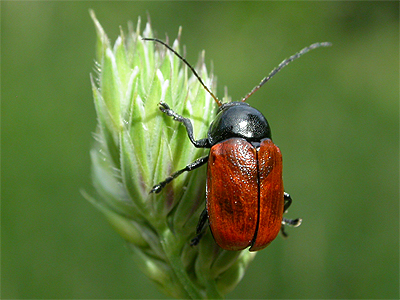
|
Beetles Coleoptera Carr's book produces many historical records from Coleopterists active during the late 1800's and early 1900's, such as J. Kidson Taylor, W.G. Blatch, E.C. Bedwell, G.W. Chaster, Canon Fowler and several others. Carr's work in bringing all of Nottinghamshire's invertebrate records, together into one publication, showed tremendous foresight on his part, as it produced an historical invertebrate site record, which provided a basis for us to work from when constructing the area's species lists. A number of Coleoptera surveys have been conducted at Sherwood Forest and despite the fact that much coverage has been given over the last 40 years by numerous individuals, there still appear to be large gaps in the records of many species from around 1920-1960. This means that Coleoptera has perhaps not been as well recorded at Sherwood Forest as one might have expected with such a notable site. |
|||
| ...... | ||||
| During the
1960's and into the 1970's, many records came from C.
Johnson, P. Skidmore and F.A. Hunter. Over the last 20
years, more records have come from S. Wright, A. and C.
Dutton and A. and A. Binding. D.A. Lott contributed
heavily in 1998 when he surveyed much of the Sherwood
Forest area, which was subsequently followed by a further
survey in 2000 by A.B. Drane. More recently, areas of
Sherwood Forest were again surveyed by M.L. Denton, E.J.
Green, D.G. Hemingway, R.J. Marsh and D. Sharp in
2001/2002 and by ourselves in 2008, with the most recent
work by K.N.A. Alexander in 2009 and 2010. True Bugs Hemiptera Hemiptera is another under-recorded group and most of the historical site records are attributable to just a handful of individuals, namely L.A. Carr, J.W. Carr, Thornley and W.E. Ryles. Hemiptera records from Sherwood Heath by A. Godfrey between 2003 and 2006, contributed substantially towards the production of the species list, from this less frequently recorded Sherwood Forest site and provided several new species for the area. Similarly, R. Merritt's records for Nepidae, Corixidae, Naucoridae, Notonectidae, Veliidae and Gerridae are just about the only records listed for these families. Today, there seem to be even fewer individuals making real efforts to record Sherwood's Hemiptera, with most recent records coming either through casual field observations or invertebrate site surveys primarily geared towards Coleoptera or Lepidoptera. Ants, Bees and Wasps Hymenoptera Historically, Hymenoptera have been the least recorded of all the major invert orders at Sherwood Forest, with seemingly few entomologists willing to take up the challenge. Potentially, there remains much recording work still to be done in order to achieve a more balanced view of the species diversity found within the NNR and at nearby sites. Records of Parasitic wasps, were hardly recorded even at the turn of the last century and there seems to have been no further work done on these, Sawflies or Woodwasps to the present day. They generally represent a difficult order to study, with few species readily identifiable in the field or via good quality photographs, so it is not totally surprising that there are so few historical and modern records. Much of the recent work appears to have been done by M. Archer. Archer's survey is without doubt, the most comprehensive Hymenoptera survey undertaken in the NNR to date. |
||||
| ...... | ||||
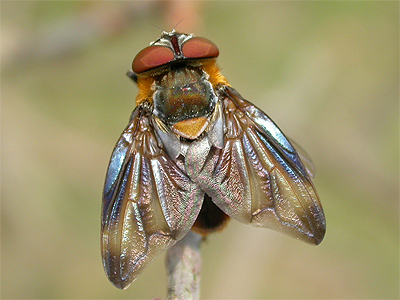
|
Most other records have
either come as casual records during site surveys for
other invert orders, or by the efforts of a handful of
individuals. Andy Godfrey's surveys of Sherwood Heath
between 2003 and 2006, contributed several interesting
and useful records, as did Derek Whiteley at the same
site over a number of years from the late 1980's onwards. True Flies Diptera Despite being one of the largest insect orders, the overall difficulty in Diptera identification has meant that yet again, little recording of the many species to be found at Sherwood, has been undertaken during the past 130 years. Much of the areas current species list, is based upon the records of L.A. Carr in 1912 and 1914. Carr was joined in his efforts by two other recorders, who seem to have remained confined to the Country Park area. R.C. Bradley and C.J. Wainwright provided many records referred to by J.W. Carr as "Sherwood Forest near Edwinstowe". Several species these men captured, were notable as being the first records for the UK at the time. |
|||
| ...... | ||
| After the
recording of Carr, Bradley and Wainwright in the late
1800's and early 1900's, virtually no Diptera recording
was undertaken (at least from the information we have at
our present disposal) and it was not until A. Godfrey's
surveys at Sherwood Heath in 2003, 2004 and 2006, that
any other records came from the Sherwood Forest area. Godfrey's surveys produced many new species recorded at Sherwood for the first time, or produced the first species records since the days of Carr, Bradley and Wainwright. Similarly, his most recent survey work in the Country Park and Buck Gates areas on behalf of Natural England East Midlands, yielded even more new Diptera and the reappearences of species not recorded for nearly a century. Godfrey's work and that of the Victorian recorders, constitutes the backbone of the NNR's Diptera species list. There must certainly be more surprising species yet to be encountered here, particularly following the chance discovery of the Cranefly Ctenophora ornata in 2009. This is a species pretty much confined to areas of the New Forest and Windsor Great Park and yet another example of how Sherwood is slowly developing a reputation to hold it's own, in a direct comparison to those other nationally renowned sites. Changes in species' diversity among Sherwood's invertebrates Sherwood Forest has produced a large variety of invertebrate species since the late 1800's. Whilst it is likely many of the species recorded historically have since disappeared, new species appear to have successfully colonised the NNR in their place. Sherwood has certainly seen quite a turn over among it's breeding invertebrate species within the last 100 years. A combined total of 515 species from the three groups looked at here have not been recorded since the early 1900's, whilst since the turn of this century, 371 species totally new to the NNR have been recorded. This is quite a staggering figure within a small time scale of just nine years. |
| ...... | |||||||||||||||||||||||||||||||||||||||||||||||||||||||
|
Of the
three groups, only Arachnida have shown an
increase on the number of species gained, to those lost.
Sherwood currently has an Arachnida list of 234
species, losing 21 species but gaining 27. Better recorded groups such as Coleoptera and Lepidoptera have both shown a much greater species' loss, losing 330 and 164 species each respectively. |
||||||||||||||||||||||||||||||||||||||||||||||||||||||
| ...... | |||||||||||||||||||||||||||||||||||||||||||||||||||||||
| Factors
contributing to the changes in Sherwood's invertebrate
diversity Likely factors for such declines/increases in species diversity include climate change, commercial forestry planting, forest management, and habitat change/loss. A large percentage of Sherwood Forest is still commercial Pine plantation. Ancient Oak woodland makes up a large percentage and heathland the rest. Clipstone Old Quarter in the Birklands West and Ollerton Quarter SSSI, is still largely all commercial Pine, but large sections here (and elsewhere) are gradually being restored back to heathland, but will this see the eradication of species which have recently colonised the area?. Hopefully, not all the mature Pines will be removed as the large-scale introduction of Pine has probably been one of the biggest single reasons for Sherwood's range of new species. Pine has been responsible for the introduction of some spectacular species to the site, or at the very least, enabled previously rare species to become more common. Coleoptera to have benefitted through the increase in Pine include Striped Ladybird and the ground beetle Dromius angustus, whilst the larva of the Cobweb Beetle (Ctesias serra) is more often found on Pine at Sherwood, than on any other tree species. Some Lepidoptera to rely on Pine include not only the large and spectacular Pine Hawk-moth, but several species of micro moths. |
||||
| ...... | ||||
| However, perhaps the most
annoying aspect of present forest management, is the
desire to create or restore particular habitat within the
Sherwood Forest area, whilst seemingly giving little or
no thought to invertebrate diversity currently on site,
or the many new species which have recently colonised the
area. Maintaining the correct balance is important and
whilst every effort should be made to protect and
encourage any ancient Oak woodland, Forest management
could run the risk of losing some of the invertebrates it
now has. Proposed thinning work at the approximate location of the RDB1 Hazel Pot Beetle (Cryptocephalus coryli) has since recieved further consultation and it is agreed that some thinning work will benefit this area of the forest and create additional habitat for the Hazel Pot Beetle. This beetle was only rediscovered at Sherwood in 2008, after an absence of at least 70 years and probably more, as the last records are not credited to any observer or recorder. The discovery of the Hazel Pot Beetle has been well covered previously on this website and it seems that the Sherwood colony is currently the only confirmed UK site for the beetle. |
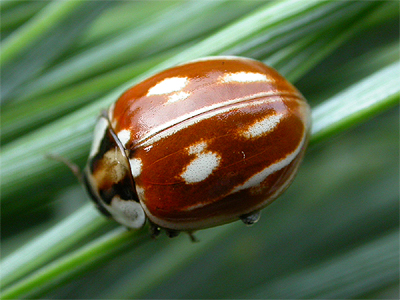
|
|||
| ...... | ||||
| 2008 also saw
another important discovery at Sherwood, when Ranger Gary
Joynt found a Welsh Clearwing (Synanthedon scoliaeformis) a moth totally reliant on mature
Birch during the larval stage, in an area of the Country
Park. Work with pheremone lures in 2009 were successful,
with a total of 46 Welsh Clearwings recorded. Whilst most
lures were operated in the area of the original 2008
sighting, we expanded the search to other areas of both
the Country Park, Budby South Forest and Sherwood Heath.
Welsh Clearwings failed to turn up at Sherwood Heath on
the one occasion we tried, but it is likely that it does
occur there. Larval exit holes were also discovered at
Clipstone Old Quarter, so the moth is doing well despite
being completely unnoticed beforehand. Another worrying aspect is that outside contractors are employed for some of the thinning work and it should be important that contractors employed to carry out such work, are reliable enough to be able to do the job correctly and follow the job description accurately. A year or two ago, Birch scrub on Budby South Forest was due to be thinned to leave some Birch scrub standing, yet whole areas of the site were simply cut down and the stumps treated to stop re-growth. In effect, large areas of Budby have now lost a succession of Birch at varying stages of growth, but it is hoped that steps will be taken to redress this in the near future, across the Sherwood Forest area. |
||||
| ...... | ||||
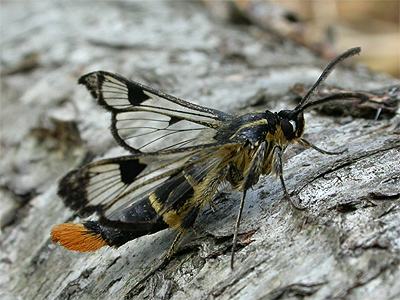
|
Silver Birch is every bit
as important as the Oak to a large number of
invertebrates and yet seems totally ignored when habitat
management is considered. Although difficult and perhaps costly to keep under control due to it's vigorous growth, it is important that areas within the Forest have the correct balance of Birch from scrub to mature specimens, to provide suitable hostplants for breeding invertebrates. Similarly, the removal of non-native fauna such as Sycamore, Beech and the control of species like Hawthorn and Sallow (both often removed at the scrub stage) has had a harmful affect on invertebrates in the past, but both these species encourage a much greater invertebrate diversity. Over the last few years, there has been a concerted effort to control and/or remove Bracken in certain areas of the Country Park. In the long term, this will be beneficial to the forest's invertebrate diversity, but will it be at the cost of particular species? Most obviously affected will be ground living Coleoptera and Arachnida. |
|||
| ...... | ||||
| Mechanical
methods of Bracken control have a detrimental affect on
habitat. This is more noticeable where Bracken control is
carried out using heavy machinery like a tractor and
roller. Logs, fallen branches and limbs are often moved
distances from their original site if loose on the
ground, but even long-term static logs half buried on the
soil floor, are frequently wrenched from the ground and
temporarily rendered useless as an over-wintering site to
either larvae or adults. The continuation of this practice is most likely to affect both Ground Beetle (Carabidae) and Rove Beetle (Staphylinidae) populations and their diversity here over time. However, it also has similar implications to other Coleoptera and Arachnida, which either live or over-winter within leaf litter, under logs and under the bark of fallen branches. |
||||
| ...... | ||||
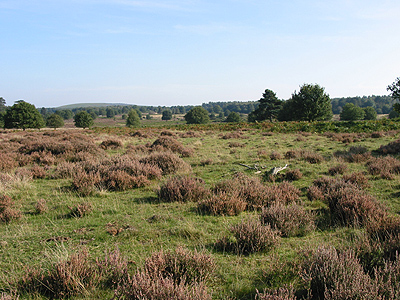
|
Although natural decay
causes fallen branches to become broken up over many
years, the process is hastened by the use of large
machinery. This lessens the time that such wood is
suitable for larval and adult stages. There must also be
some concerns as to what affect the regular use of heavy
machinery has on the general soil structure and tree root
systems through soil compaction. The use of herbicide as a Bracken control method, is very likely to have some effect on the forest's Coleoptera in the long term. Certainly many species are especially affected by their use. Although weed wiping is the most environmentally sensitive method of chemical weed control, perhaps the manner of it's application reduces it's environmental sensitivity to a degree. Climatic changes over the past hundred years, has also helped the considerable change within the range of species found across Sherwood. A succession of much milder Winters has been as the result of climate change and species which actually require a period of cold and generally dry conditions in order to survive, Sherwood has probably now lost. |
|||
| ...... | ||||
| In complete
reverse, Sherwood has gained species which actually
benefit from warmer Winter conditions. Recent climatic
changes have also led to wetter Summers (especially since
2004) and even since 2006, many invertebrates (Ladybirds
and Shieldbugs being especially noticeable) have seen
numbers decrease dramatically in 2007 through factors
unknown, but gradually increase to the good numbers of
more recent Summers. It's therefore possible, that the
apparent disappearance of some species, could actually be
cyclical over varying degrees of time. Some moths have
suffered similarly and we saw a distinct lack of numbers
among many common moths in 2008 and 2009. A large aspect of Sherwood's management is a balancing act. The area is extremely popular with the public for obvious reasons and easier accessability via the increase in the motor car, has led to greater public use. Yet despite it's popularity with the public, it is still surprisingly easy to find you have the forest to yourself, especially in areas furthest away from the Major Oak. An extremely good network of paths crosses various areas of the site, with much less often used forest paths in all other areas. Most of the Country Park is fenced off into sections, which helps keep the public out, but also keeps the Longhorn Cattle in. Longhorn Cattle have been used for several years now, in an effort to maintain the forest using more traditional methods. The use of cattle has certainly helped from a Coleoptera aspect, helping to add several new dung beetles to the site species list in the last few years, but they do some detrimental damage to habitat by removing the loose bark off trees and moving static logs. It could also be questioned as to whether a cattle dung will have any long-term effect on raising the nutrient content within the soil. The future for Sherwood's invertebrate species Much depends on forest management plans and how keen organisations like Natural England are towards protecting invertebrates. One certainty is that some species will continue to disappear at Sherwood and will eventually be replaced by new ones. Whether this will be through climate change, or induced through future site management remains to be seen. The variety of habitats across the NNR and the wealth of invertebrates they contain, means that a variety of different management techniques have to be employed at each site. It's a case of balance and knowing/doing what is right for that habitat and not generalising. What was good for Sherwood Forest a few years ago, was the attention and media publicity its invertebrates were getting than had previously been the case. That attention was soon forgotten and the continued publicity gained through the local, national and international press reporting of the latest rare finds at Sherwood, eventually came to be regarded as a hinderence to site management and certainly nothing positive. That led to a number of local recorders to renew their interests and recording efforts at other sites. Its a shame really, as ultimately its Sherwood Forest that loses out. |